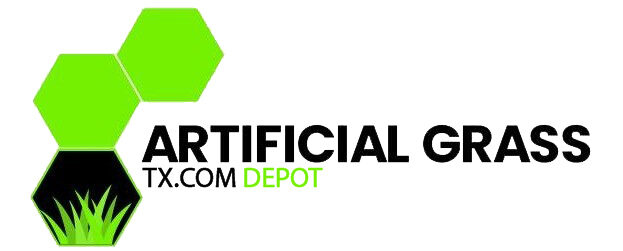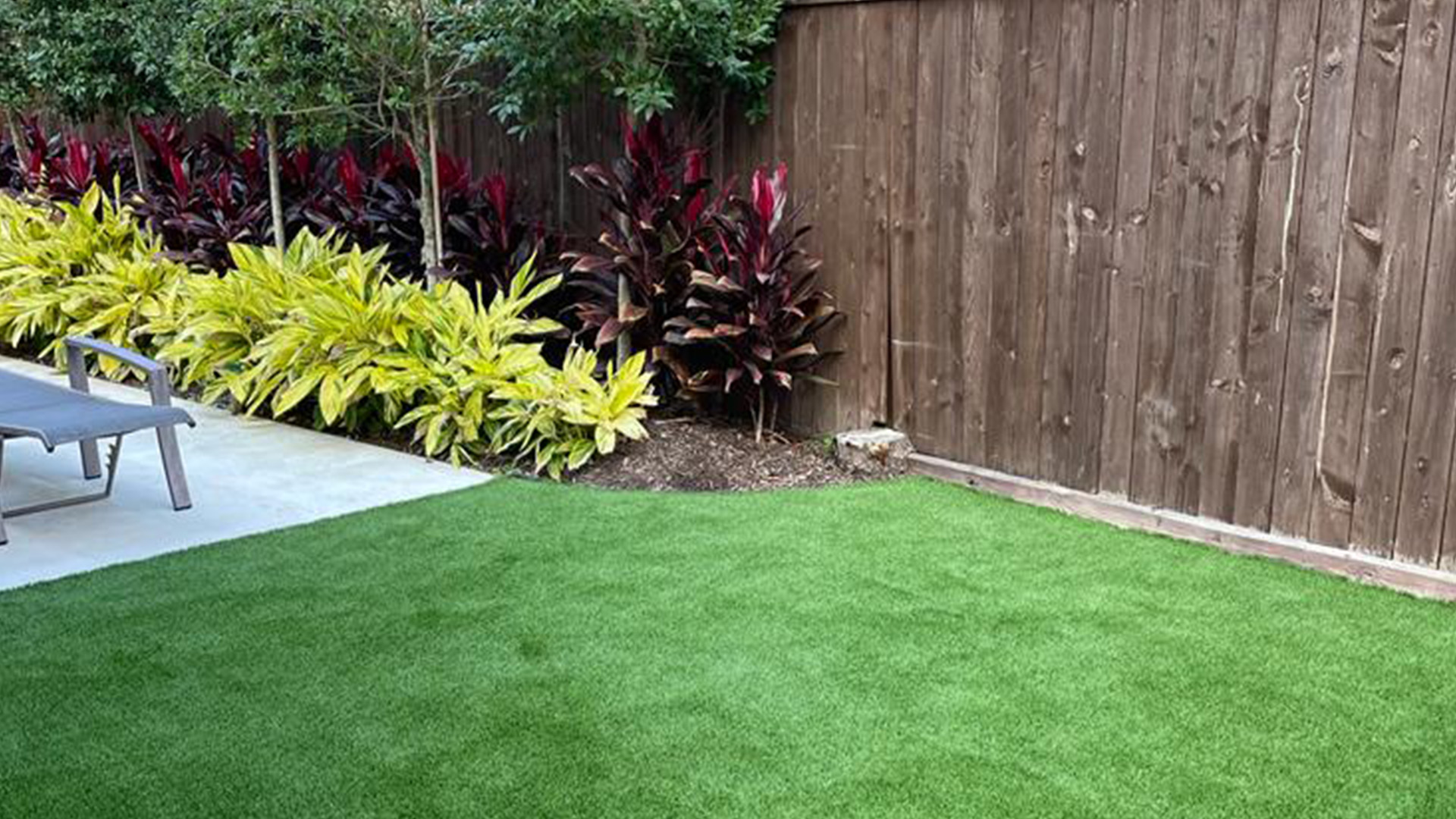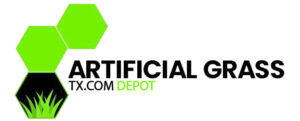From Drought to Delight: How Artificial Turf is Solving Florida’s Water Crisis
As Florida continues to grapple with an ever-worsening water crisis, innovative solutions are emerging to tackle the problem head-on. One such solution that is gaining traction is the use of artificial turf as an alternative to traditional grass lawns. In a state known for its lush green landscapes and year-round sunshine, the idea of replacing natural grass with synthetic turf may seem counterintuitive at first. However, as water scarcity becomes a pressing issue, the benefits of artificial turf become increasingly apparent. Not only does it require no water to maintain its vibrant appearance, but it also eliminates the need for pesticides, fertilizers, and constant mowing. In this article, we will explore how artificial turf is revolutionizing Florida’s approach to water conservation, transforming drought-stricken lawns into delightful, sustainable landscapes. Join us as we delve into the environmental and economic advantages of artificial turf, and discover how this innovative solution is reshaping the future of Florida’s water management.
What is artificial turf?
Artificial turf, also known as synthetic grass or fake grass, is a surface made to resemble natural grass. It is composed of synthetic fibers, typically made from materials like polyethylene or polypropylene, that are designed to mimic the look and feel of real grass. The fibers are tufted into a backing material, which is then installed over a base layer. Artificial turf can be used for various applications, including residential lawns, sports fields, and commercial landscapes. It is available in different colors, textures, and pile heights to suit different preferences and purposes.
Artificial turf has come a long way since its inception in the 1960s. Early versions of synthetic grass were criticized for their unnatural appearance and poor performance. However, advancements in technology and materials have led to the development of highly realistic and durable artificial turf products. Modern artificial turf not only looks and feels like real grass, but it also offers a range of benefits that make it an attractive alternative to natural grass.
One of the key advantages of artificial turf is its low maintenance requirements. Unlike natural grass, which needs regular watering, mowing, and fertilizing to stay healthy and vibrant, artificial turf requires minimal upkeep. It does not need to be watered, saving significant amounts of water in water-scarce regions like Florida. Additionally, artificial turf does not require pesticides or fertilizers, reducing the use of harmful chemicals and protecting the environment. Furthermore, artificial turf stays green and lush all year round, regardless of weather conditions, eliminating the need for constant maintenance and upkeep.
Benefits of artificial turf in solving Florida’s water crisis
The use of artificial turf offers numerous benefits in the context of Florida’s water crisis. The state has long been plagued by water scarcity, with its natural water sources being overexploited and depleted. As the demand for water continues to rise while the supply dwindles, finding innovative ways to conserve water has become essential. Artificial turf provides a viable solution to reduce water consumption and promote sustainable landscaping practices.
By replacing natural grass with artificial turf, homeowners and businesses can significantly reduce their water usage. On average, a natural grass lawn requires about 55 gallons of water per square foot per year to stay healthy and green. In contrast, artificial turf requires no water at all. This means that by installing artificial turf, a household with a 1,000 square foot lawn can save over 55,000 gallons of water annually. Multiply that by the thousands of lawns across Florida, and the potential water savings are staggering.
In addition to water conservation, artificial turf also eliminates the need for pesticides and fertilizers. Traditional grass lawns often require the use of chemicals to control pests and promote growth. These chemicals can leach into the soil and find their way into nearby water bodies, causing pollution and harming aquatic ecosystems. By choosing artificial turf, homeowners and businesses can avoid the use of harmful chemicals, contributing to a healthier environment and cleaner water sources.
Furthermore, artificial turf offers a sustainable solution to Florida’s water crisis by reducing the demand for lawn maintenance equipment. Gas-powered lawnmowers, trimmers, and other machinery contribute to air pollution and carbon emissions. By eliminating the need for constant mowing and maintenance, artificial turf helps reduce the carbon footprint associated with lawn care. This not only benefits the environment but also improves air quality and reduces noise pollution in residential areas.
Case studies of successful artificial turf implementation in Florida
As artificial turf gains popularity as a water-saving landscaping solution, numerous case studies have emerged showcasing its successful implementation in Florida. These real-world examples demonstrate the transformative impact of artificial turf on water conservation efforts and the environment.
One such case study is the city of Miami Beach, which faced significant water scarcity issues due to its high water usage for landscaping purposes. In an effort to address the problem, the city encouraged residents and businesses to replace their natural grass lawns with artificial turf. The results were remarkable. Not only did the switch to artificial turf significantly reduce water consumption, but it also improved the overall aesthetics of the city. Miami Beach’s streets and public spaces were transformed into vibrant, green spaces that required minimal maintenance and water.
Another case study comes from the town of Naples, located on the southwest coast of Florida. Facing severe water restrictions and soaring water bills, many homeowners in Naples turned to artificial turf as a water-saving alternative. By replacing their natural grass lawns with synthetic turf, residents were able to reduce their water usage by up to 70%. The town’s water conservation efforts were so successful that it was able to lift its water restrictions and avoid potential water shortages.
These case studies highlight the significant impact that artificial turf can have on water conservation in Florida. By embracing this innovative solution, communities and individuals can play a crucial role in preserving the state’s precious water resources and mitigating the effects of the water crisis.
The environmental impact of artificial turf
Artificial turf offers several environmental advantages over natural grass, making it a sustainable choice for water-scarce regions like Florida. One of the most significant environmental benefits of artificial turf is its water-saving potential. As mentioned earlier, natural grass lawns require large amounts of water to stay healthy and green, putting a strain on water resources. By replacing natural grass with artificial turf, water consumption can be drastically reduced, helping to alleviate the pressure on water sources and promote water conservation.
In addition to water savings, artificial turf also eliminates the need for pesticides and fertilizers. These chemicals, when applied to natural grass, can leach into the soil and contaminate groundwater and nearby water bodies. This pollution can have detrimental effects on aquatic ecosystems and can even pose risks to human health. By opting for artificial turf, homeowners and businesses can avoid the use of harmful chemicals, reducing water pollution and protecting the environment.
Furthermore, artificial turf contributes to a greener and more sustainable future by reducing the carbon footprint associated with lawn care. Traditional grass lawns require regular mowing, which often involves the use of gas-powered lawnmowers. These machines emit carbon dioxide and other greenhouse gases, contributing to climate change. By eliminating the need for constant mowing, artificial turf helps reduce carbon emissions and mitigate the environmental impact of lawn maintenance.
It is important to note that while artificial turf offers environmental benefits, it is not without its drawbacks. The production and disposal of artificial turf can have negative environmental consequences. The manufacturing process of synthetic grass requires the use of energy and resources, and the disposal of old or worn-out turf can create waste management challenges. However, advancements in recycling and sustainable manufacturing practices are helping to address these concerns and make artificial turf a more environmentally friendly option.
Cost considerations of installing artificial turf
When considering the installation of artificial turf, it is essential to evaluate the cost implications. While artificial turf offers long-term savings in terms of water and maintenance expenses, there are upfront costs associated with its installation. Understanding these costs and weighing them against the potential benefits is crucial for making an informed decision.
The cost of artificial turf installation can vary depending on several factors, including the size of the area, the quality of the turf, and the complexity of the installation process. On average, homeowners can expect to pay between $5 and $20 per square foot for artificial turf installation. This includes the cost of materials, labor, and any additional expenses such as ground preparation or drainage systems.
While the initial cost of installing artificial turf may seem high, it is important to consider the long-term savings. By eliminating the need for watering, fertilizing, and mowing, artificial turf can result in significant reductions in water bills and maintenance costs. Over time, these savings can offset the initial investment and make artificial turf a cost-effective solution.
It is also worth noting that some municipalities and water agencies offer rebates or incentives for homeowners and businesses that switch to artificial turf. These programs aim to promote water conservation and encourage the adoption of water-saving landscaping practices. Before installing artificial turf, it is advisable to check with local authorities to see if any incentives or rebates are available.
How to choose the right artificial turf for your needs
Choosing the right artificial turf for your specific needs is crucial to ensure optimal performance and satisfaction. With a wide range of options available in terms of color, texture, and pile height, it can be overwhelming to make the right choice. However, by considering a few key factors, you can select the artificial turf that best suits your requirements.
The first consideration is the intended use of the artificial turf. Are you installing it for residential purposes, such as a backyard lawn or a rooftop garden? Or are you looking for synthetic grass for a sports field or a commercial landscape? The type of usage will determine the specific requirements for the turf, such as durability, traction, and infill material.
Another important factor to consider is the climate and weather conditions in your area. Florida’s hot and humid climate requires artificial turf that can withstand high temperatures and resist UV damage. Look for turf that is specially designed for tropical climates and has built-in UV protection.
Quality is another crucial aspect to consider when choosing artificial turf. Look for reputable manufacturers and suppliers that offer high-quality products. Consider factors such as the density of the turf, the strength of the fibers, and the overall durability. Investing in a high-quality product will ensure that your artificial turf lasts longer and maintains its appearance over time.
Lastly, consider your budget when selecting artificial turf. While it is tempting to opt for the cheapest option available, it is important to balance cost with quality. Cheaper turf may not offer the same level of performance, durability, or aesthetics as higher-quality options. Evaluate your budget and choose a product that offers the best value for your money.
Installation and maintenance tips for artificial turf
Proper installation and maintenance are crucial for the longevity and performance of artificial turf. Here are some essential tips to ensure that your synthetic grass stays in pristine condition:
1. Prepare the ground: Before installing artificial turf, it is important to properly prepare the ground. Remove any existing vegetation, rocks, or debris from the area. Ensure that the soil is level and compacted to create a stable base for the turf.
2. Install a weed barrier: To prevent the growth of weeds under the artificial turf, install a weed barrier fabric. This will help keep the area weed-free and reduce the need for maintenance.
3. Choose the right infill: Infill material is used to add stability and cushioning to the artificial turf. There are various options available, including rubber, silica sand, and organic infills. Choose an infill material that suits your specific needs and preferences.
4. Proper drainage: Ensuring proper drainage is essential to prevent water accumulation and maintain the integrity of the turf. Install a drainage system or perforated pipes if necessary to allow water to flow freely.
5. Regular cleaning: Artificial turf requires regular cleaning to remove debris, leaves, and other contaminants. Use a leaf blower or a stiff brush to keep the turf clean and free from debris. Periodically rinse the turf with water to remove any dirt or stains.
6. Address spills and stains promptly: If any spills or stains occur on the artificial turf, it is important to address them promptly. Use a mild detergent or artificial turf cleaner to remove the stain. Avoid using harsh chemicals or bleach, as they can damage the turf.
7. Inspect for damage: Regularly inspect the artificial turf for any signs of damage, such as tears, rips, or loose seams. Address any issues immediately to prevent further damage and ensure the longevity of the turf.
By following these installation and maintenance tips, you can ensure that your artificial turf remains in excellent condition for years to come.
Common misconceptions about artificial turf
Despite its numerous benefits, artificial turf is often subject to misconceptions and misinformation. Let’s address some of the common misconceptions surrounding artificial turf:
Misconception 1: Artificial turf looks fake and unnatural.
While early versions of artificial turf may have had a plastic-like appearance, modern synthetic grass is highly realistic and often indistinguishable from natural grass. High-quality artificial turf products mimic the look, feel, and color variations of real grass, providing a natural and aesthetically pleasing landscape.
Misconception 2: Artificial turf gets too hot.
It is true that artificial turf can get warmer than natural grass in direct sunlight. However, advancements in technology have led to the development of turf products with built-in cooling properties. These products reflect sunlight and reduce heat absorption, making them more comfortable to walk on even in hot climates.
Misconception 3: Artificial turf requires no maintenance.
While it is true that artificial turf requires less maintenance compared to natural grass, it still requires some level of upkeep. Regular cleaning to remove debris, occasional rinsing, and addressing spills or stains are necessary to keep the turf in good condition.
Misconception 4: Artificial turf is not environmentally friendly.
Artificial turf offers several environmental benefits, including water savings, reduced chemical usage, and lower carbon emissions. However, it is important to consider the entire lifecycle of artificial turf, from manufacturing to disposal, to assess its overall environmental impact.
By dispelling these misconceptions, it becomes clear that artificial turf is a viable and sustainable landscaping option for water-scarce regions like Florida.
Conclusion: The future of artificial turf in Florida’s water conservation efforts
As Florida’s water crisis continues to worsen, the adoption of innovative solutions becomes imperative. Artificial turf is emerging as a game-changer in the state’s water conservation efforts, offering a sustainable and water-saving alternative to traditional grass lawns. The benefits of artificial turf, such as reduced water consumption, elimination of harmful chemicals
Contact Artificial Grass TX today and learn how you can save water and be part of water conservation efforts. Artificial Grass TX is compromise on reduce water consumption and promote sustainable landscaping practices.


